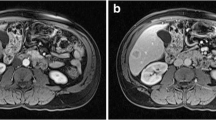Abstract
Background
In this study, we ask between patients with graft failure listed for retransplant and patients with hepatocellular carcinoma (HCC) outside of UCSF criteria, who has the greater survival benefit with transplantation?
Methods
This is a retrospective analysis, of liver transplant (LT) patients, done between February 2002 and December 2009 at our center. Patients were included in the “extended HCC” group if their tumor was pathologically beyond UCSF criteria at LT and in the “redo” group if they underwent LT for graft failure occurring more than 3 months after the initial LT. Extended criteria donors (ECDs) were defined as donors above 70 years old, DCD, serology positive for HCV, and split grafts.
Results
There were 25 redos and 37 extended HCC patients. Use of ECDs or high donor risk index organs was associated with poor outcome in both groups (P = 0.005). Overall, the extended HCC population had a much better survival than redos, both at 1 and 3 years.
Conclusion
These two very different but high risk patient populations have very different survival rates. At a time where regulatory agencies demand more and more with regards to transplant outcomes, we think the transplant community has to reflect on whether allocation justice and fair access to transplant are respected if we start allocating organs based on outcomes.


Similar content being viewed by others
References
Shawn B, Gordon R, Iwatsuki S, Starzl T (1985) Hepatic retransplantation. Transplant Proceedings 17(1):264–271
Markmann JF et al (1997) Long-term survival after retransplantation of the liver. Ann Surg 226(4):408–418, discussion 418-20
Ringe B, Neuhaus P, Lauchart W, Pichlmayr R (1986) Experience with hepatic retransplantation. Transplant Proceedings 18(5):1207–1209
Morel P et al (1991) Liver retransplantation in adults: overall results and determinant factors affecting the outcome. Transplant Proc 23(6):3029–3031
Anthuber M et al (1992) Liver retransplantation—indications, frequency, results. Transplant Proc 24(5):1965–1966
Lemmens HP et al (1993) Comparison of perioperative morbidity following primary liver transplantation and liver retransplantation. Transplant Proc 25(2):1923–1924
Fangmann J et al (1993) Hepatic retransplantation: the Hannover experience of two decades. Transplant Proc 25(1 Pt 2):1077–1078
D’Alessandro AM et al (1993) Retransplantation of the liver—a seven-year experience. Transplantation 55(5):1083–1087
Evans RW et al (1993) Is retransplantation cost effective? Transplant Proc 25(1 Pt 2):1694–1696
Jurim O, Busuttil RW (1996) Retransplantation. In: Bussutil RK, Klintman GB (eds) Transplantation of the liver. Saunders, Philadelphia, pp 497–502
Ubel PA, Arnold RM, Caplan AL (1993) Rationing failure. The ethical lessons of the retransplantation of scarce vital organs. Jama 270(20):2469–2474
Powelson JA et al (1993) Hepatic retransplantation in New England—a regional experience and survival model. Transplantation 55(4):802–806
Mazzaferro V et al (1996) Liver transplantation for the treatment of small hepatocellular carcinomas in patients with cirrhosis. N Engl J Med 334(11):693–699
Feng S et al (2006) Characteristics associated with liver graft failure: the concept of a donor risk index. Am J Transplant 6(4):783–790
Yao FY et al (2004) Liver transplantation for hepatocellular carcinoma: lessons from the first year under the Model of End-Stage Liver Disease (MELD) organ allocation policy. Liver Transpl 10(5):621–630
Yao FY et al (2001) Liver transplantation for hepatocellular carcinoma: expansion of the tumor size limits does not adversely impact survival. Hepatology 33(6):1394–1403
Soejima Y et al (2007) Extended indication for living donor liver transplantation in patients with hepatocellular carcinoma. Transplantation 83(7):893–899
Gondolesi GE et al (2004) Adult living donor liver transplantation for patients with hepatocellular carcinoma: extending UNOS priority criteria. Ann Surg 239(2):142–1429
Zimmerman MA et al (2008) Recurrence of hepatocellular carcinoma following liver transplantation: a review of preoperative and postoperative prognostic indicators. Arch Surg 143(2):182–188, discussion 188
Brown RS et al (2004) Liver and intestine transplantation. Am J Transplant 4(Suppl 9):81–92
Ghobrial RM et al (2001) A 10-year experience of liver transplantation for hepatitis C: analysis of factors determining outcome in over 500 patients. Ann Surg 234(3):384–393, discussion 393-394
Yagci G et al (2008) The impact of donor variables on the outcome of orthotopic liver transplantation for hepatitis C. Transplant Proc 40(1):219–223
Wolfe RA et al (2008) Calculating life years from transplant (LYFT): methods for kidney and kidney-pancreas candidates. Am J Transplant 8(4 Pt 2):997–1011
Conflicts of interests
None.
Author information
Authors and Affiliations
Corresponding author
Rights and permissions
About this article
Cite this article
Rochon, C., Sheiner, P., Mahadevappa, B. et al. Can we direct organ allocation based on predicted outcome? Hepatocellular carcinoma outside of UCSF criteria or retransplant?. Langenbecks Arch Surg 397, 711–715 (2012). https://doi.org/10.1007/s00423-012-0910-3
Received:
Accepted:
Published:
Issue Date:
DOI: https://doi.org/10.1007/s00423-012-0910-3




